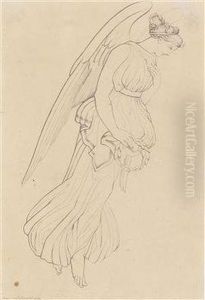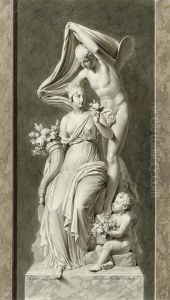Josef Klieber Paintings
Josef Klieber was an Austrian sculptor and medallist born in 1773 in Vienna. He was a prominent artist during the late 18th and early 19th centuries, a period marked by significant political and cultural changes in Europe, including the French Revolution and the Napoleonic Wars. Klieber's work is often associated with the Neoclassical style, which was characterized by a return to classical antiquity's simplicity, harmony, and proportion.
Klieber received his artistic education at the Academy of Fine Arts Vienna, which was the foremost institution for arts education in the Habsburg Empire. At the Academy, he would have been exposed to the prevailing artistic trends and to the works of other prominent sculptors of the time. After completing his studies, Klieber went on to establish himself as a skilled sculptor and medallist, creating works that reflected the aesthetic ideals of Neoclassicism, emphasizing grace and clarity of form.
Throughout his career, Josef Klieber created a variety of works, including portrait busts, medals, and religious sculptures. His pieces were often marked by their fine details and the lifelike representation of his subjects. Klieber's medals especially gained recognition for their intricate designs and the precision with which he captured the profiles of notable figures of his time. These works not only demonstrated his technical prowess but also served as historical documents, capturing the likenesses of individuals who shaped the era's social and political landscapes.
Klieber's religious works are also of note, as they contributed to the decoration and symbolism of many churches and religious institutions throughout Austria. His sculptures often featured in altarpieces, memorials, and other ecclesiastical settings, showcasing his ability to imbue his works with a sense of spirituality and reverence appropriate to their context.
Josef Klieber passed away in 1850, leaving behind a legacy as one of Austria's respected Neoclassical sculptors. His contributions to the arts were recognized by his contemporaries, and today, his works can be studied as examples of the Neoclassical movement in Austria. They continue to be appreciated for their craftsmanship and the way they reflect the cultural and historical milieu of Klieber's time.

